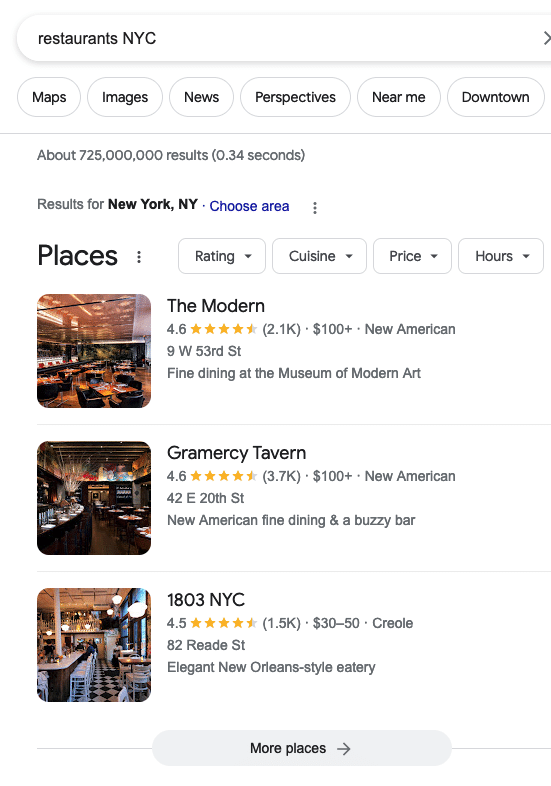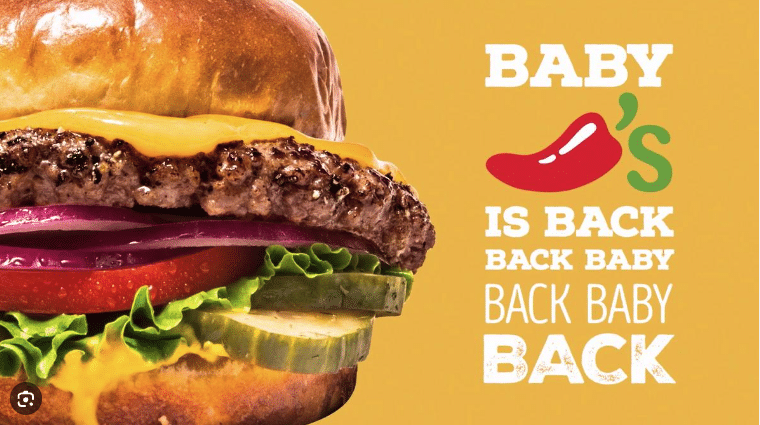This article dives deep into that very question, unpacking the layers of effort needed by independent restaurant owners to carve out their niche. Unlike their franchise counterparts with built-in brand recognition and copy-and-paste business models, independents start from scratch in building customer loyalty and brand. Delving into the art of molding a distinct identity, captivating patrons through various online and traditional spaces, and mastering the various financial intricacies that are specific to independent restaurants
We’ll talk about the art of building a devoted following. How independent restaurants can tap into community involvement. We’ll contrast this with how franchises enjoy the perks of established methodologies and continuous backing, while peeling back the curtain on the nuanced opportunities that come with marketing an independent restaurant.

Table Of Contents:
- Understanding the Marketing Landscape for Independent Restaurants
- Competing with Powerful Franchise Restaurant Marketing
- Financial Dynamics in Restaurant Marketing
- Economies of Scale – A Double-Edged Sword
- Marketing Strategies for Independent Restaurants
- Tackle Operational Challenges So Marketing Can Be a Priority
- Wrapping Up
Understanding the Independent Restaurant Marketing Landscape
Navigating the creation of a unique brand for independent restaurants can be like taking a trip without an itinerary, where every decision shapes its identity from the ground up. Without the built-in brand recognition that franchise restaurants enjoy, these owners must pour heart and soul into distinguishing their eateries in a crowded marketplace. This involves not just picking a cuisine or theme but weaving a compelling independent restaurant marketing story that resonates with potential customers.
Crafting a Unique Brand Identity
The freedom to think freely and make business decisions based on real-time factors might seem like a competitive advantage for independent operators. However, navigating the complexities of building a distinctive brand identity from scratch can be daunting. Unlike chain restaurants, which benefit from proven successful marketing strategies of their parent companies, independently owned establishments need to identify and leverage what makes them stand out.
This could mean anything from menu design inspired by local flavors to interiors echoing the community’s vibe. The key lies in understanding customer preferences and market trends closely—a task requiring continuous research and adaptation.
The Advantage of Being an Independent Restaurant Owner
While there are many ways in which independent restaurant marketing is more challenging than it is for a franchise there are still clear advantages to being “local”.
Achieving loyal customer status doesn’t happen overnight for independents—it’s more of building one relationship at a time through personalized engagement and exceptional experiences. Here lies another difference: while franchises can rely on existing customer bases’ loyalty towards the established brand name; independent restaurant owners start cultivating their following without any prior connections.
To do this, independent restaurants who strive to compete with franchise businesses should level the advantage that is uniquely theirs: they are local.
While a franchise restaurant might create an artificially “local” atmosphere by hanging local high school banners in the bar and creating geographically-themed specialty cocktails, independent restaurants have the unique advantage of really understanding their communities…and being present.
Meanwhile, social media groups have provided a distinctive opportunity for community engagement. Independent restaurant owners can easily join local town groups where they have a chance to participate in meaningful conversations.
Imagine a restaurant owner comments on a post about a family who recently moved into town, welcoming the recently relocated with a small gift card. Or supporting a fundraiser for a local little league team. Or providing the banquet hall to the high school marketing club. Each of these aspects of community engagement cost little (or nothing) and yet they cement independent restaurants as local figures.
Competing with Powerful Franchise Restaurant Marketing
Leveraging Established Brand Recognition
While local restaurants strive to capitalize on the “home town” element, in many cases franchises benefit from the type of powerful franchise marketing that makes their establishments feel like HOME. That’s the power franchise restaurants wield with their established brand recognition. They connect with a ready-made audience eager for the familiar experience they’ve come to rely on. This trust is not just comforting; it’s a competitive edge sharper than any kitchen knife.
Think of it this way: while independent restaurant owners spend sleepless nights trying to carve out a slice of the market for themselves, franchise restaurants serve up success thanks to proven business models and built-in brand loyalty. It’s akin to starting a race miles ahead simply because people recognize your uniform.
While established brand recognition gives chain restaurants a significant advantage, it’s important to avoid presenting a one-sided perspective. Here’s an expanded perspective on the topic, acknowledging both the strengths and potential drawbacks of established brand recognition:
Strength: Building Trust and Familiarity
Leveraging a Preexisting Customer Base: Franchise restaurants benefit from a built-in customer base familiar with the brand, menu, and overall experience. This familiarity translates to trust and comfort, encouraging repeat visits and attracting new customers who recognize the brand.
Consistent Quality and Predictability: Established brands often emphasize consistency in quality and experience across locations. This allows customers to expect a certain level of familiarity and quality regardless of the specific location they visit.
Potential Drawbacks
Homogenization and Lack of Uniqueness: The emphasis on consistency can lead to a sense of homogenization, where the unique character and local flair are sacrificed in favor of brand standards. This can be a disadvantage for customers seeking a more personalized and distinct dining experience.
Limited Control and Creativity: Franchise owners operate within a pre-defined framework set by the franchisor. This can limit their ability to experiment with unique menu items, personalize the experience, or cater to specific local tastes, potentially hindering their ability to connect with the local community and differentiate themselves from competitors.
Nuances and Considerations
Independent Restaurant Marketing Can Build Brand Recognition: While slower and requiring more effort, independent restaurants can build brand recognition through consistent quality, exceptional service, and a focus on community engagement.
Balancing Consistency and Uniqueness: Some successful franchise models strike a balance between maintaining brand consistency and allowing for some level of local adaptation, catering to specific regional preferences and incorporating local ingredients.
This advantage means lower risk for those who choose the franchise path—something anyone considering diving into the restaurant industry should consider carefully.
Financial Dynamics in Independent Restaurant Marketing
Grasping the economic intricacies involved in marketing for independent restaurants means first recognizing the clear contrast between solo dining establishments and chain entities. For starters, while independent owners enjoy keeping all profits, they often grapple with higher initial investments in their marketing efforts. Crafting a brand’s essence and rolling out marketing encapsulates the entirety of this process.
In contrast, franchisees face ongoing fees that cut into their revenue but benefit significantly from established support systems. These frameworks offer in-depth instruction and tested tactics to efficiently engage with prospective clients. The trade-off here is clear: pay royalties and ongoing fees for a shortcut to customer loyalty or invest upfront in building your path to success.
Juggling these expenses also deeply impacts choices around crafting menus or scrutinizing shifts in market dynamics. Franchise agreements may limit flexibility but offer safety nets like built-in brand recognition, which can be invaluable during tough times such as those predicted by 2024 Consumer Credit Forecast. Independent restaurants have complete control but must stay agile, constantly adapting to changing consumer preferences without the cushion of an existing customer base.
Economies of Scale – A Double-Edged Sword
Franchise restaurants often enjoy cost savings on supplies, thanks to the principle of economies of scale. This means they can buy in bulk and save big time, which is a dream scenario for any business owner who doesn’t love a good discount? But here’s where it gets spicy: this same advantage might restrict their ability to source locally or adapt quickly to changing tastes.
On the flip side, independent restaurants face higher costs because they don’t have the buying power that franchises do. However, what they lack in discounts, they make up for in agility. Local restaurants can often pivot much faster than franchises, sourcing ingredients from local farms or tweaking their offerings based on customer feedback without having to cut through red tape.
From a independent restaurant marketing perspective, this also means that local restaurants have the ability to embrace smart guerrilla marketing tactics in a way that would be far more complicated to deploy from centralized franchise hubs.
In the culinary world, this interplay weaves a complex battle between saving pennies and swiftly adapting to change.
Independent Restaurant Marketing Strategies
While the charm and individual character of independent restaurants set them apart, navigating the competitive landscape demands a tailored approach to marketing. Here, we explore strategies to address the unique challenges faced by independent restaurants, empowering them to not just compete, but thrive.
Leveraging Uniqueness and Building a Brand Identity
Independent restaurants possess an inherent advantage: the freedom to express their unique culinary vision. This strength can be harnessed by crafting a compelling brand story that resonates with target customers. Highlighting distinctive elements like locally sourced ingredients, unique menu items, or a commitment to sustainability fosters emotional connections and fosters brand loyalty.
For example:
A local restaurant might host a “Chef’s Table” experience: Imagine an exclusive event that allows a limited number of guests to interact directly with the chef, experiencing a unique multi-course meal with explanations of each dish’s inspiration, ingredients, and preparation techniques. Promote the event on social media and your website, highlighting the chef’s background and culinary vision. This creates an intimate and memorable experience, showcasing the restaurant’s unique skills and fostering a deeper connection with customers.
Or perhaps a restaurant launches a “Farm to Table” initiative, partnering with local farmers and producers to showcase their fresh, seasonal ingredients on your menu. Feature these partnerships and the stories of the farmers on your website and social media platforms, highlighting the local sourcing and sustainable practices behind your dishes. Additionally, organize “Farm Tours” or host farmer’s market pop-up events at your restaurant, allowing customers to connect with the people who cultivate the food they consume. This initiative strengthens community ties, fosters a sense of transparency and trust, and emphasizes your restaurant’s commitment to local and sustainable practices.
Independent Restaurant Marketing Ideas That Engage the Local Community
While there are ways in which independent restaurant marketing is more challenging than it is for a franchise, local community engagement is one of the areas in which the scales are tipped differently. Building a strong online presence is critical in today’s digital consumer group. Creating a user-friendly website with mouthwatering photos, an engaging social media presence with regular updates, and online ordering capabilities allows customers to connect with the restaurant easily. Engaging locally through partnerships with other businesses, participating in community events, and collaborating with local food bloggers and influencers helps build brand awareness and establish connections within the community. What’s more, these tend to be tactics that are far easier for an independent restaurant to deploy than their franchise competitors.

Smart SEO Strategies and Targeted Restaurant Advertising
Investing in strong local SEO (Search Engine Optimization) ensures that when customers search for relevant keywords, the independent restaurant appears prominently in search results. For independent restaurant marketing efforts, Google Business Profiles often provide greater ROI than website. Optimizing Google Business profiles provides a high level of visibility and makes it easy for consumers to engage. Utilizing online reviews and reputation management tools fosters trust and transparency, encouraging potential customers to choose the independent restaurant over the competition. Additionally, targeted advertising on platforms like social media or search engines allows them to reach their ideal customer base with tailored messaging without breaking the bank.
Prioritizing Customer Loyalty and Building Relationships
Independent restaurants have the unique ability to cultivate personal relationships with customers. Implementing loyalty programs, offering personalized recommendations, and hosting special events foster a sense of community and encourage repeat business. Encouraging positive online reviews and actively acknowledging feedback demonstrates a commitment to customer satisfaction, further strengthening the connection.
The key to success in local markets heavily relies on building these types of strong connections within the community. This means not just knowing what should be on the menu, but understanding customer preferences and being able to adapt quickly to changing market trends. Independent restaurant operators have this unique advantage over franchise models because they can tweak their offerings without having to wade through layers of franchisor’s rules or approvals.
Harnessing Technology within Budget To Gain a Marketing Advantage
Another of the ways in which marketing is more challenging for an independent restaurant than it is for a franchise comes down to access to strategic assets. While independent restaurants may not have access to the extensive financial resources of chain restaurants, there are numerous cost-effective options exist. Independent restaurants can utilize free social media platforms, leveraging email marketing tools, and exploring freemium marketing automation software options allows them to implement effective marketing strategies without breaking the bank. Additionally, collaborating with local tech startups or agencies can unlock creative solutions and resources.
By embracing these strategies, independent restaurants can transform their marketing efforts. By leveraging their unique strengths, building relationships within the community, utilizing technology strategically, and fostering customer loyalty, independent restaurants can overcome marketing challenges and carve a unique space in the culinary landscape, ensuring their continued success and contribution to the vibrant dining scene.
Tackle Operational Challenges So Marketing Can Be a Priority
Beyond the ways in which independent restaurant marketing is more challenging, there are a number of other unique hurdles. Unlike their franchise counterparts, independently owned eateries must tackle operational challenges head-on without the cushion of corporate guidance or established procedures.
One significant obstacle is mastering the learning curve associated with supply chain management. Lacking the leverage of major chains, these dining spots frequently grapple with elevated expenses and unforeseen hiccups, disrupting their routine workflow. It’s like trying to sail through stormy seas without an experienced crew; you learn as you go but at what cost?
Navigating through this landscape necessitates a mastery in tweaking business strategies rapidly to keep pace with evolving market desires and consumer tastes. However, achieving this level of agility isn’t straightforward. It demands a deep understanding of both local markets and broader industry dynamics—a feat easier said than done.
To navigate these choppy waters, some resources offer insights into creating more efficient business systems amid such unpredictability. The YELP Economic Average Q3 2024 report, sheds some light on how others are weathering similar storms.
Wrapping Up
There are many ways in which marketing is more challenging for an independent restaurant than it is for a franchise, and those challenges often extend into other aspects of running a successful restaurant. From identifying lower-cost marketing technology alternatives, to really focusing on community engagement, cultivating both recognition and loyalty among customers is the challenge.
To a large extent, it starts with crafting a unique identity. That’s your first step. Leverage your autonomy as a sole proprietor to carve out a distinctive presence.
Focus on engaging the customer base and the community. Be present in a way franchise restaurants cannot (or will not) be. Remember, every satisfied diner is a potential repeat guest or even better, a brand ambassador.
Leverage technology wisely but remember: while franchises might have bigger budgets, your agility lets you adapt faster to market trends and local preferences.
In sum, to run successful marketing for an independent restaurant, carve out your niche with passion and persistence. Your journey might be tougher than that of franchisees’, but it’s also filled with opportunities to make your mark in the bustling culinary scene.









